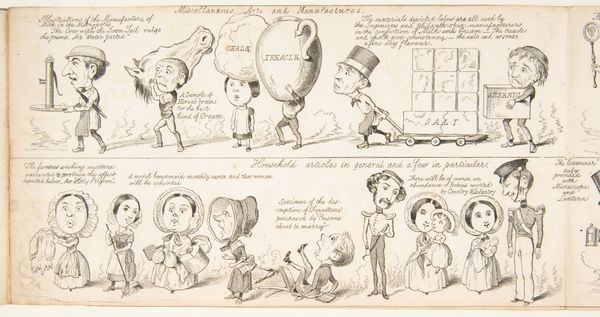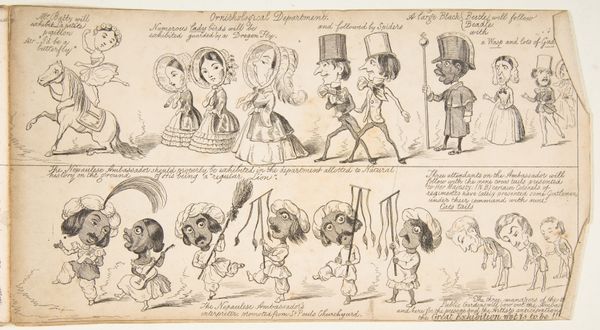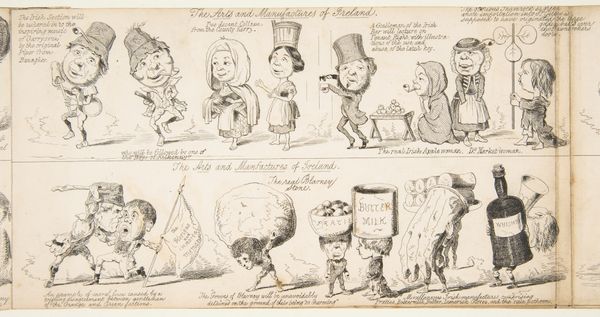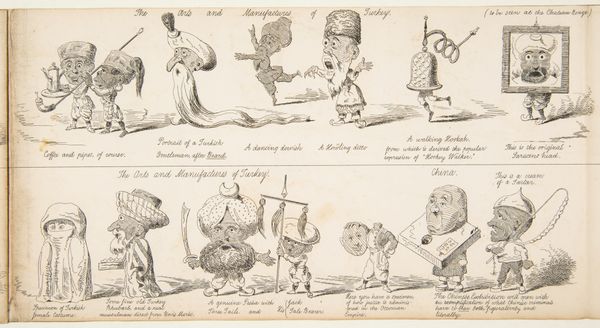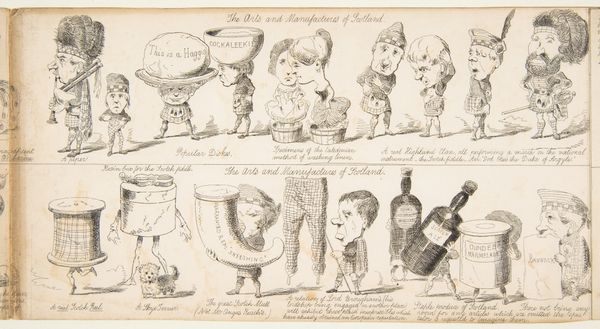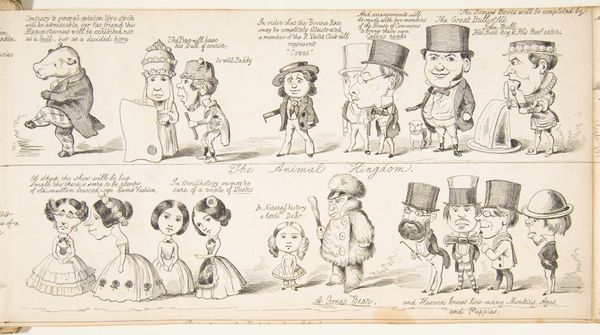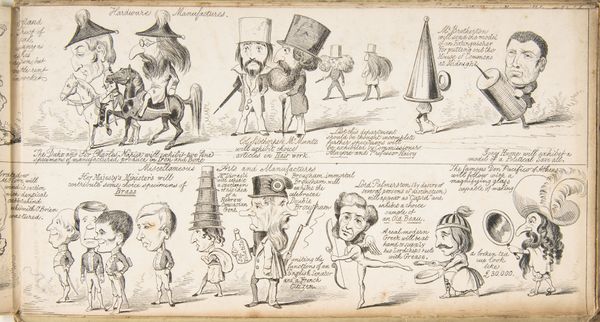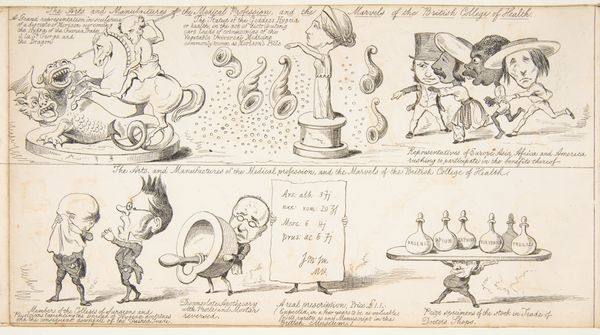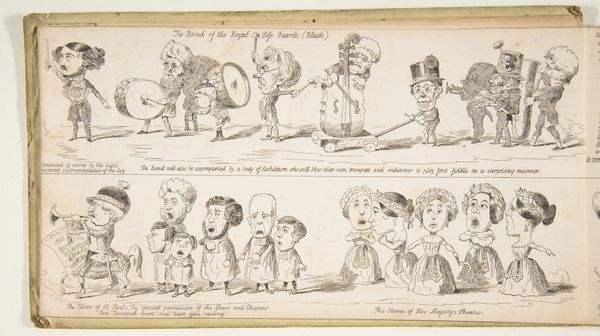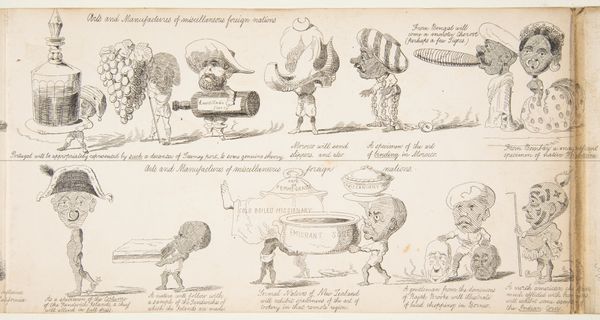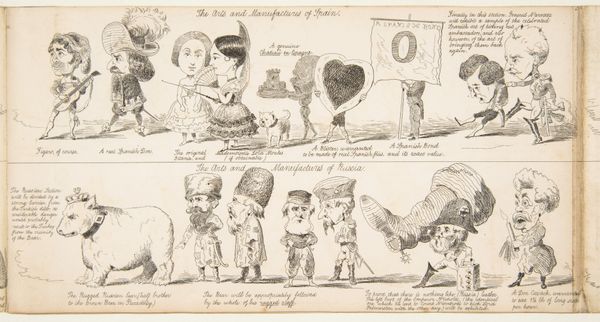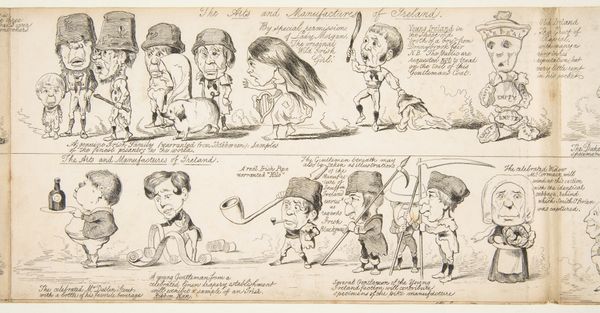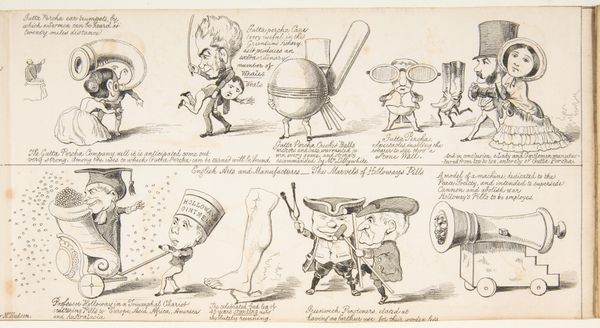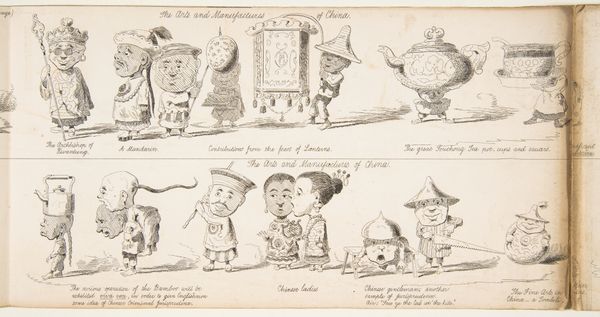
The Great Exhibition "Wot is to Be", Probable Results of The Industry of All Nations in The Year '51, Showing What is to be Exhibited, Who is To Exhibit, in Short How Its All Going to Be Done 1850
0:00
0:00
drawing, print, paper, ink
#
drawing
#
narrative-art
# print
#
caricature
#
paper
#
ink
#
romanticism
#
genre-painting
Dimensions: sheet: 5 1/16 x 9 5/16 in. (12.8 x 23.7 cm)
Copyright: Public Domain
Curator: Well, this piece certainly strikes me as whimsical and satirical. All those distorted figures and exaggerated features—it almost feels like a dark, topsy-turvy world on display. Editor: You've captured the mood perfectly. The artwork, crafted by George Augustus Sala around 1850, is titled "The Great Exhibition 'Wot is to Be', Probable Results of The Industry of All Nations in The Year '51, Showing What is to be Exhibited, Who is To Exhibit, in Short How Its All Going to Be Done." It’s a drawing, using ink on paper. Curator: The title is certainly a mouthful. What kind of social commentary was Sala making, reflecting on the exhibition so vividly in a caricatured manner? It seems to pit French intellectuals against industry? Editor: The Great Exhibition was meant to be a celebration of industrial progress, primarily of British progress at the Crystal Palace, of course. Sala is employing caricature to poke fun at French contributions and society more broadly, expressing anxieties about industrialisation in ways familiar to Romanticism, even in its twilight. You see similar tropes in Gillray. What I find fascinating is its engagement with themes of national identity and anxieties. What's deemed worthy of exhibition? And who gets to decide? We still see the legacy of that political structure reproduced in exhibitions and World's Fairs, only its impact now concerns a global scale. Curator: Absolutely. Who controls the narrative, and what voices are amplified or silenced? What’s more, I note all of the caricatured figures of men of letters. It seems that anxieties concerning technological progress also encompassed broader concerns about literacy and access to a kind of progress rooted in education. Editor: Precisely! Sala is making it very clear whose perspective is being shown—namely one invested in particular forms of national prestige rooted in cultural exclusivity. Curator: It is sobering to remember that this type of exclusionary project, though perhaps less obvious, endures, often structuring global interactions under the veneer of free exchange. Editor: Indeed, remembering the visual vocabulary of resistance can arm us against repeating errors of the past while struggling for equitable futures.
Comments
No comments
Be the first to comment and join the conversation on the ultimate creative platform.
